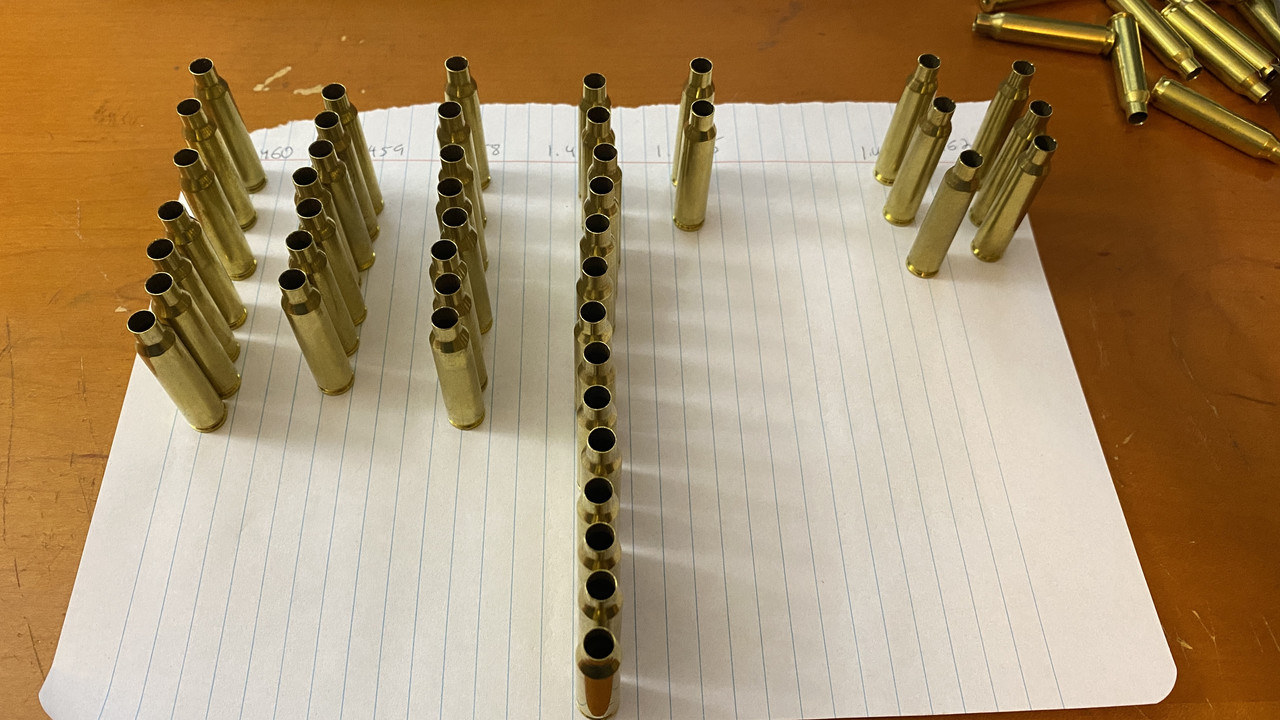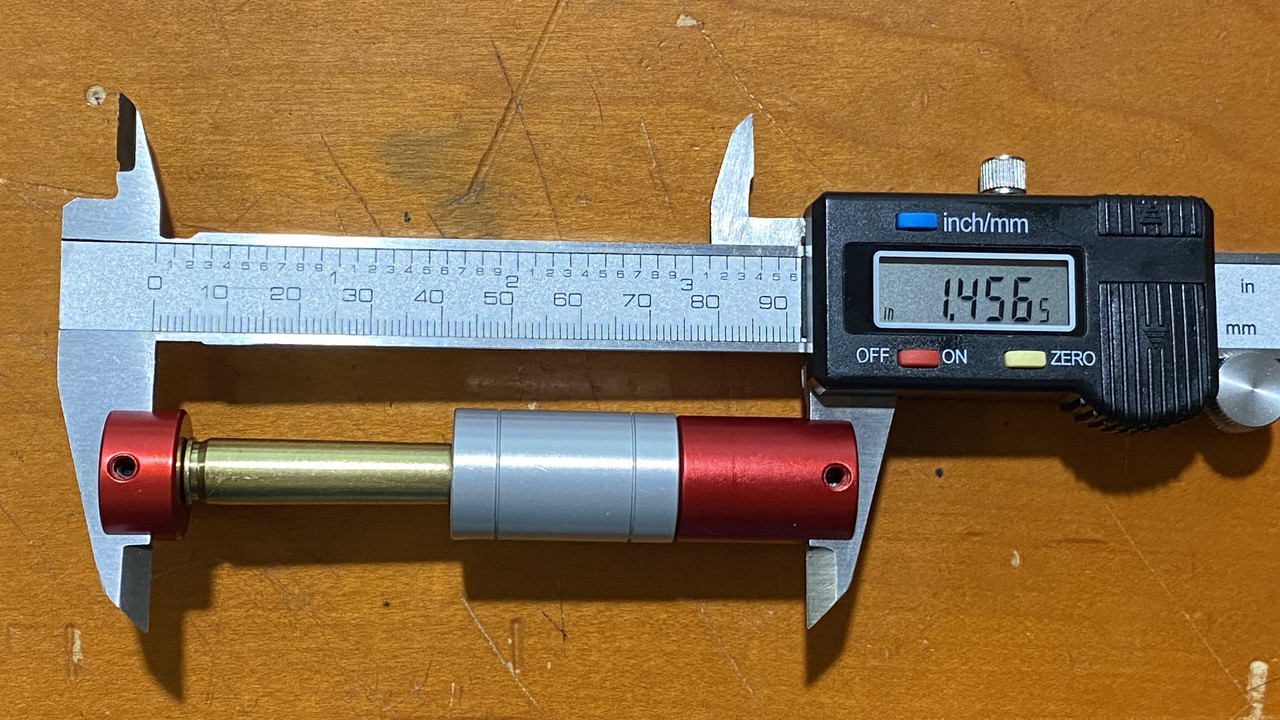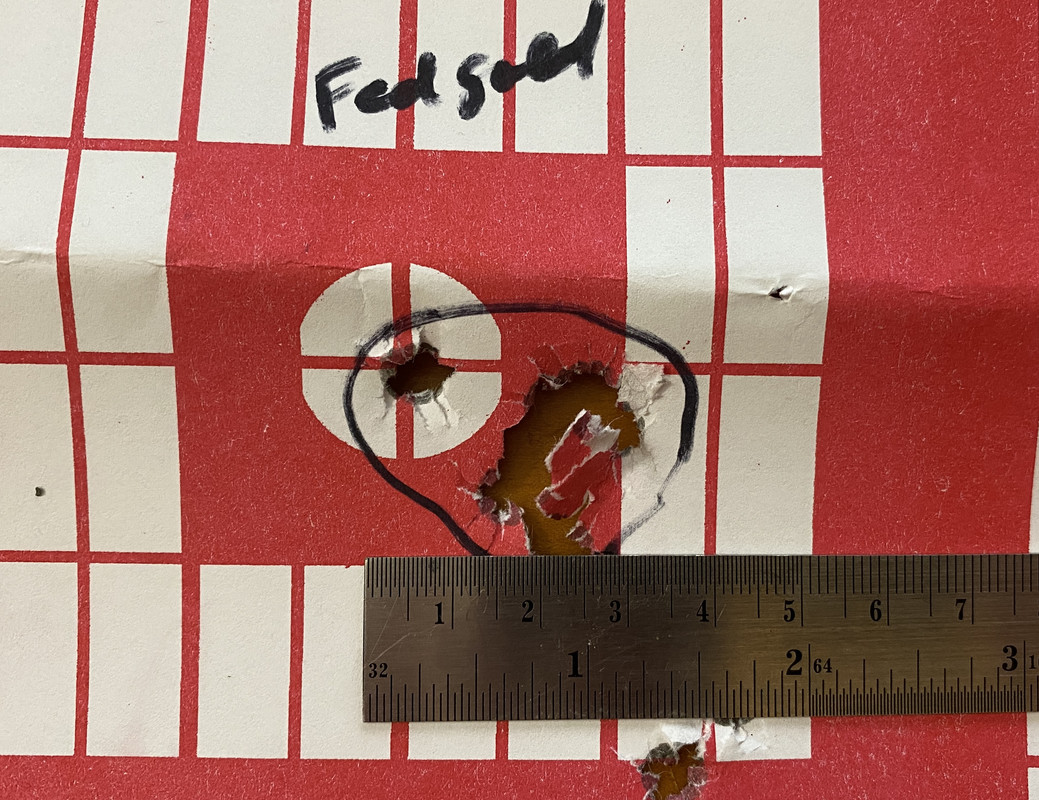Ok...I'm trying to wrap my head around the headspace concept. I'm not so much aiming for ultimate precision but for practical accuracy and loading AR's exclusively, no bolt guns. I hear most people load .002-.003 below a fired case. This seems to be a workable tolerance that allows problem-free feeding of cartridges.
From reading various threads it seems it takes at least two, maybe three firings before the cartridge headspace will settle and be consistent across multiple cases.
I'm loading PMC and Lake City brass for .223 and .308. I've taken measurements from once fired, twice fired and processed, ready to drop powder and a bullet brass. I processed most of the PMC brass and I purchased "processed" LC brass that I annealed, unified, etc...
Going to keep my questions to the .223 for the time being but I have some interesting observations on .308 as I have some factory cartridges from various manufacturers.
Anyway...with the PMC .223, I didn't take any measurements from the factory-loaded ammo prior to firing unfortunately. I'm measuring 10 random cases and taking the average.
Fired once, processed/resized, ready to load-1.44885"
Fired once, factory ammo unprocessed-1.45665
Reloaded, fired again, unprocessed-1.456
Full disclosure, I didn't even consider case headspace during the first round of resizing. So...I'm looking at a .00715 setback from once fired with the PMC I've processed. Seems like too much headspace and my primers, while not pushed out, do flatten fairly readily and I'm staying within published charges, referring to Lyman, Hornady, Sierra and Nosler, nothing over their maximum loads. For round two of reloading, I'm starting from scratch as I've dealt with neck tension and a few other issues that I've sorted.
Strangely, on the Lake City, which was fired once prior to me receiving it, didn't grow when reloaded and fired out of my rifle.
Fired once, fully processed, ready to reload-1.454
Fired twice, unprocessed, primer removed-1.454
Taking the LC out another decimal position, it actually came in slightly shorter on average so I may go back and measure again. I don't see how that's actually possible? My digital calipers aren't super expensive. Maybe time to invest in a better caliper or change the battery.
For measuring my rifle's headspace, I have the Hornady OAL gauge, modified cases and I do have the bullet comparator set as well as the headspace gauges.
I cleaned the barrel and chamber prior to taking measurements but I can't seem to get a consistent reading using the OAL gauge and I'm not even sure how useful that measurement is given I'm measuring at the ogive and that'll vary with the bullet being used. I seem to get more consistent readings with the Sierra 69TMK vs. the Hornady 55gr VMAX. Ultimately, the measurement will vary on where the bullet is positioned when I insert the modified case on the end of the OAL gauge. If I seat the bullet short, down in the case, insert the case and gently push the bullet forward with the OAL's rod, I'll get a different reading from seating the bullet long and moving the OAL gauge rod to meet up with the bullet. It's a Wylde chamber but my understanding is that shouldn't matter for headspace measurements. I will get a very slight marring on the bullet if I push a bit harder with the OAL gauge. It almost seems like it seats twice. I get the initial contact but if I exert a bit more force, it'll seat further in without getting the bullet stuck in the chamber.
So...starting from scratch for round two, my plan is to take five rounds of already reloaded ammo cartridges, write the headspace on the cartridge, fire them and measure after. Given that they're too short already, wondering if that'll throw off my subsequent measurements vs. a case that was sized .003 off of fired?
For the LC brass, which was resized by someone else, I'll find five cases which have the same headspace measurement and do the same. It's .002 off the fired PMC brass but not sure they're comparable. Thoughts?
From reading various threads it seems it takes at least two, maybe three firings before the cartridge headspace will settle and be consistent across multiple cases.
I'm loading PMC and Lake City brass for .223 and .308. I've taken measurements from once fired, twice fired and processed, ready to drop powder and a bullet brass. I processed most of the PMC brass and I purchased "processed" LC brass that I annealed, unified, etc...
Going to keep my questions to the .223 for the time being but I have some interesting observations on .308 as I have some factory cartridges from various manufacturers.
Anyway...with the PMC .223, I didn't take any measurements from the factory-loaded ammo prior to firing unfortunately. I'm measuring 10 random cases and taking the average.
Fired once, processed/resized, ready to load-1.44885"
Fired once, factory ammo unprocessed-1.45665
Reloaded, fired again, unprocessed-1.456
Full disclosure, I didn't even consider case headspace during the first round of resizing. So...I'm looking at a .00715 setback from once fired with the PMC I've processed. Seems like too much headspace and my primers, while not pushed out, do flatten fairly readily and I'm staying within published charges, referring to Lyman, Hornady, Sierra and Nosler, nothing over their maximum loads. For round two of reloading, I'm starting from scratch as I've dealt with neck tension and a few other issues that I've sorted.
Strangely, on the Lake City, which was fired once prior to me receiving it, didn't grow when reloaded and fired out of my rifle.
Fired once, fully processed, ready to reload-1.454
Fired twice, unprocessed, primer removed-1.454
Taking the LC out another decimal position, it actually came in slightly shorter on average so I may go back and measure again. I don't see how that's actually possible? My digital calipers aren't super expensive. Maybe time to invest in a better caliper or change the battery.
For measuring my rifle's headspace, I have the Hornady OAL gauge, modified cases and I do have the bullet comparator set as well as the headspace gauges.
I cleaned the barrel and chamber prior to taking measurements but I can't seem to get a consistent reading using the OAL gauge and I'm not even sure how useful that measurement is given I'm measuring at the ogive and that'll vary with the bullet being used. I seem to get more consistent readings with the Sierra 69TMK vs. the Hornady 55gr VMAX. Ultimately, the measurement will vary on where the bullet is positioned when I insert the modified case on the end of the OAL gauge. If I seat the bullet short, down in the case, insert the case and gently push the bullet forward with the OAL's rod, I'll get a different reading from seating the bullet long and moving the OAL gauge rod to meet up with the bullet. It's a Wylde chamber but my understanding is that shouldn't matter for headspace measurements. I will get a very slight marring on the bullet if I push a bit harder with the OAL gauge. It almost seems like it seats twice. I get the initial contact but if I exert a bit more force, it'll seat further in without getting the bullet stuck in the chamber.
So...starting from scratch for round two, my plan is to take five rounds of already reloaded ammo cartridges, write the headspace on the cartridge, fire them and measure after. Given that they're too short already, wondering if that'll throw off my subsequent measurements vs. a case that was sized .003 off of fired?
For the LC brass, which was resized by someone else, I'll find five cases which have the same headspace measurement and do the same. It's .002 off the fired PMC brass but not sure they're comparable. Thoughts?





